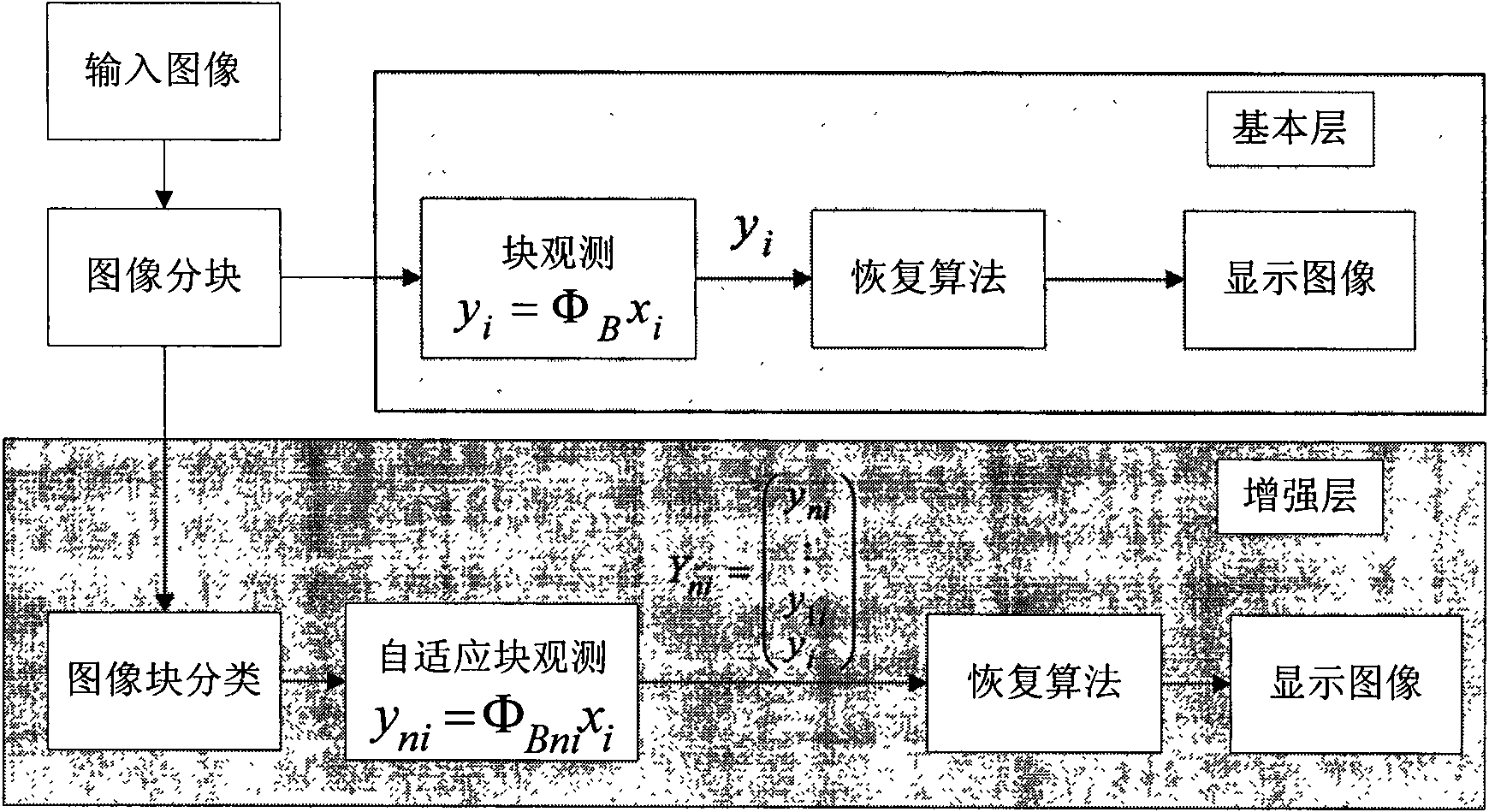Method for encoding progressive image based on adaptive block compressed sensing
A technology of image coding and sensor coding, applied in the field of image coding, which can solve the problems of not considering the change of channel bandwidth, not considering the influence of characteristic recovery quality, and the application limitation of CS theory and technology.
- Summary
- Abstract
- Description
- Claims
- Application Information
AI Technical Summary
Problems solved by technology
Method used
Image
Examples
Embodiment Construction
[0083] Ⅰ. Basic layer
[0084] The basic layer of the present invention mainly divides the read-in image into blocks, observes the image block with a small fixed observation rate, and decodes at the decoding end to obtain a basically clear restored image. The specific operation steps are:
[0085] 1. Basic layer coding:
[0086] The first step: read in an image, and divide the image into multiple non-overlapping image blocks of B×B size;
[0087] Step 2: Generate a B 2 ×B 2 Orthogonal Gaussian random matrix of size as the seed observation matrix Φ;
[0088] The third step: use formula (1) to perform CS observation for each image block:
[0089] the y i = Φ B x i , (1)
[0090] Among them, Φ B is the i-th image block x i The observation matrix of , by extracting the former M of the seed observation matrix Φ B what you get, MR is the set observation rate; y i is x i observations of all y i Form the set of observations y;
[0091] Step 4: ...
PUM
 Login to View More
Login to View More Abstract
Description
Claims
Application Information
 Login to View More
Login to View More - R&D
- Intellectual Property
- Life Sciences
- Materials
- Tech Scout
- Unparalleled Data Quality
- Higher Quality Content
- 60% Fewer Hallucinations
Browse by: Latest US Patents, China's latest patents, Technical Efficacy Thesaurus, Application Domain, Technology Topic, Popular Technical Reports.
© 2025 PatSnap. All rights reserved.Legal|Privacy policy|Modern Slavery Act Transparency Statement|Sitemap|About US| Contact US: help@patsnap.com



